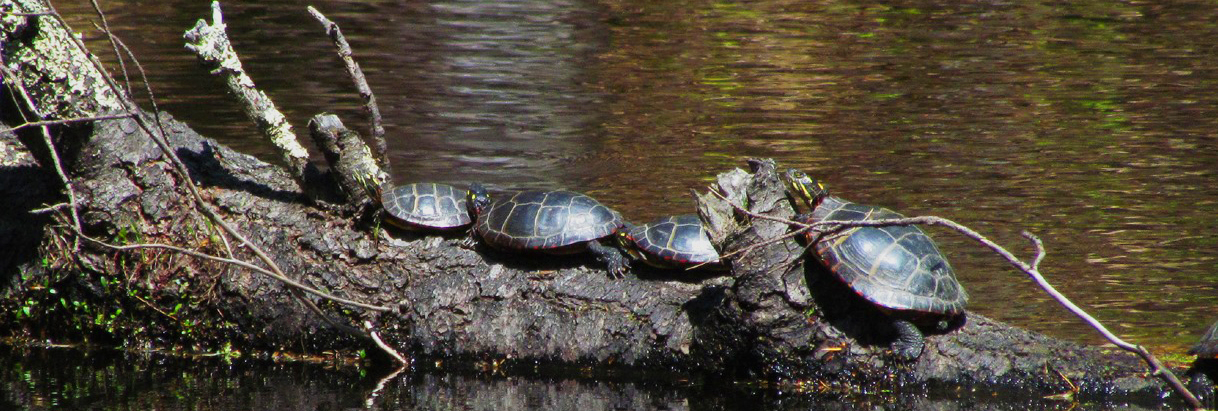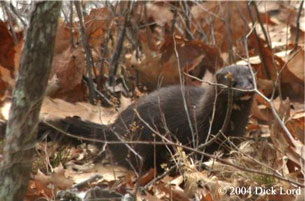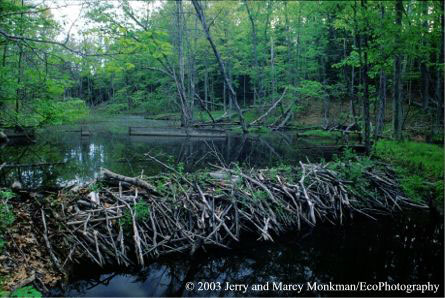Mammals
The Lamprey has a good variety of mammals. Many people have seen signs of beavers, deer, porcupines, muskrats, foxes, raccoons, opossums, and skunks around the river. But how many have ever seen flying squirrels, minks, weasels, or even fisher cats? How about an otter "slide"? Farmers and hunters have reported seeing deer, black bears, coyotes, moose, and bobcats, too. Many smaller mammals such as shrews, moles, bats, and voles round out the rich variety of mammal species along the river.
In parts of the river, beavers are very busy: downing trees, excavating dens in river banks, and, of course, making and repairing beaver dams. Their activities alter the landscape and create valuable habitat for themselves and other creatures, including fish, turtles, and ducks. Their activities sometimes convert dry land to wetland, but other times their activities make a wetland a little drier. Their dams slow the flow of water, often resulting in lower erosion. While some people consider them a nuisance, beavers perform many valuable services that are difficult for people to replicate.
Removing beaver dams to drain wetlands presents a clear threat to many species of wildlife, including three that are listed as threatened in New Hampshire: Blanding’s, spotted, and wood turtles. According to the NH Fish and Game Dept., “Beaver dams and houses cannot be destroyed or disturbed without first obtaining a special permit from Fish and Game's Executive Director. However, with the permission of the owner of affected lands, landowners, town or municipal or state officials or employees may destroy beavers and beaver dams on property under their control, if the goal is to protect property, public highways or bridges from damage or submersion. Additionally, permits are required from the N.H. Wetlands Board if heavy equipment is used in beaver dam removal.”



